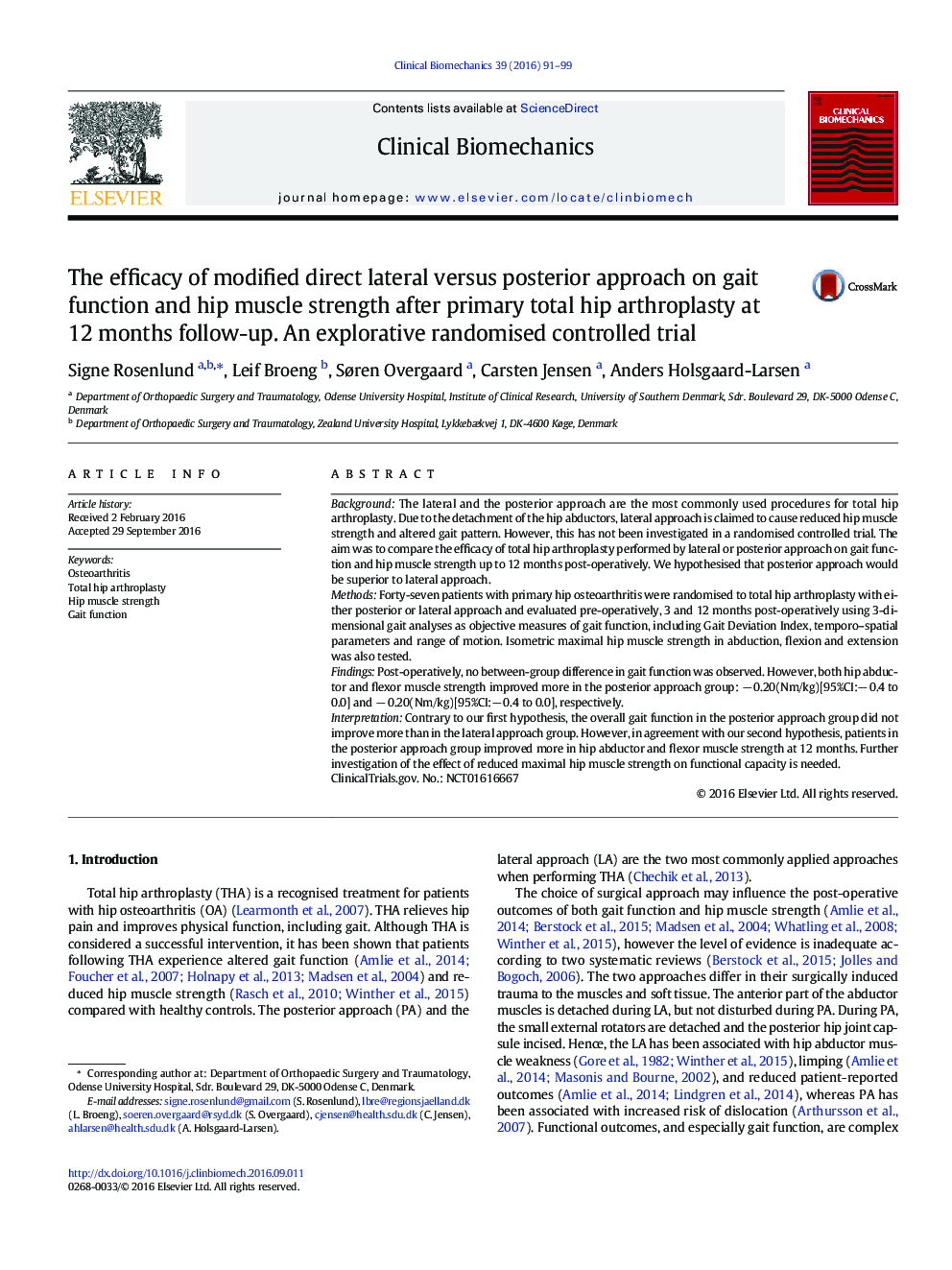| کد مقاله | کد نشریه | سال انتشار | مقاله انگلیسی | نسخه تمام متن |
|---|---|---|---|---|
| 6204579 | 1603739 | 2016 | 9 صفحه PDF | دانلود رایگان |
- Lateral and posterior approaches are commonly used for total hip arthroplasty.
- Lateral approach may cause reduced hip muscle strength and altered gait pattern.
- A randomized controlled trial comparing lateral and posterior approaches.
- We found no difference in the overall gait function between groups.
- Patients in the posterior approach group improved more in abductor muscle strength.
BackgroundThe lateral and the posterior approach are the most commonly used procedures for total hip arthroplasty. Due to the detachment of the hip abductors, lateral approach is claimed to cause reduced hip muscle strength and altered gait pattern. However, this has not been investigated in a randomised controlled trial. The aim was to compare the efficacy of total hip arthroplasty performed by lateral or posterior approach on gait function and hip muscle strength up to 12 months post-operatively. We hypothesised that posterior approach would be superior to lateral approach.MethodsForty-seven patients with primary hip osteoarthritis were randomised to total hip arthroplasty with either posterior or lateral approach and evaluated pre-operatively, 3 and 12 months post-operatively using 3-dimensional gait analyses as objective measures of gait function, including Gait Deviation Index, temporo-spatial parameters and range of motion. Isometric maximal hip muscle strength in abduction, flexion and extension was also tested.FindingsPost-operatively, no between-group difference in gait function was observed. However, both hip abductor and flexor muscle strength improved more in the posterior approach group: â 0.20(Nm/kg)[95%CI:â 0.4 to 0.0] and â 0.20(Nm/kg)[95%CI:â 0.4 to 0.0], respectively.InterpretationContrary to our first hypothesis, the overall gait function in the posterior approach group did not improve more than in the lateral approach group. However, in agreement with our second hypothesis, patients in the posterior approach group improved more in hip abductor and flexor muscle strength at 12 months. Further investigation of the effect of reduced maximal hip muscle strength on functional capacity is needed.ClinicalTrials.gov. No.: NCT01616667
Journal: Clinical Biomechanics - Volume 39, November 2016, Pages 91-99
